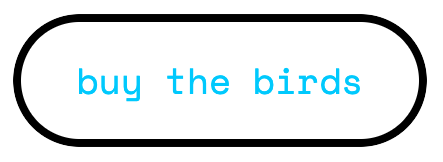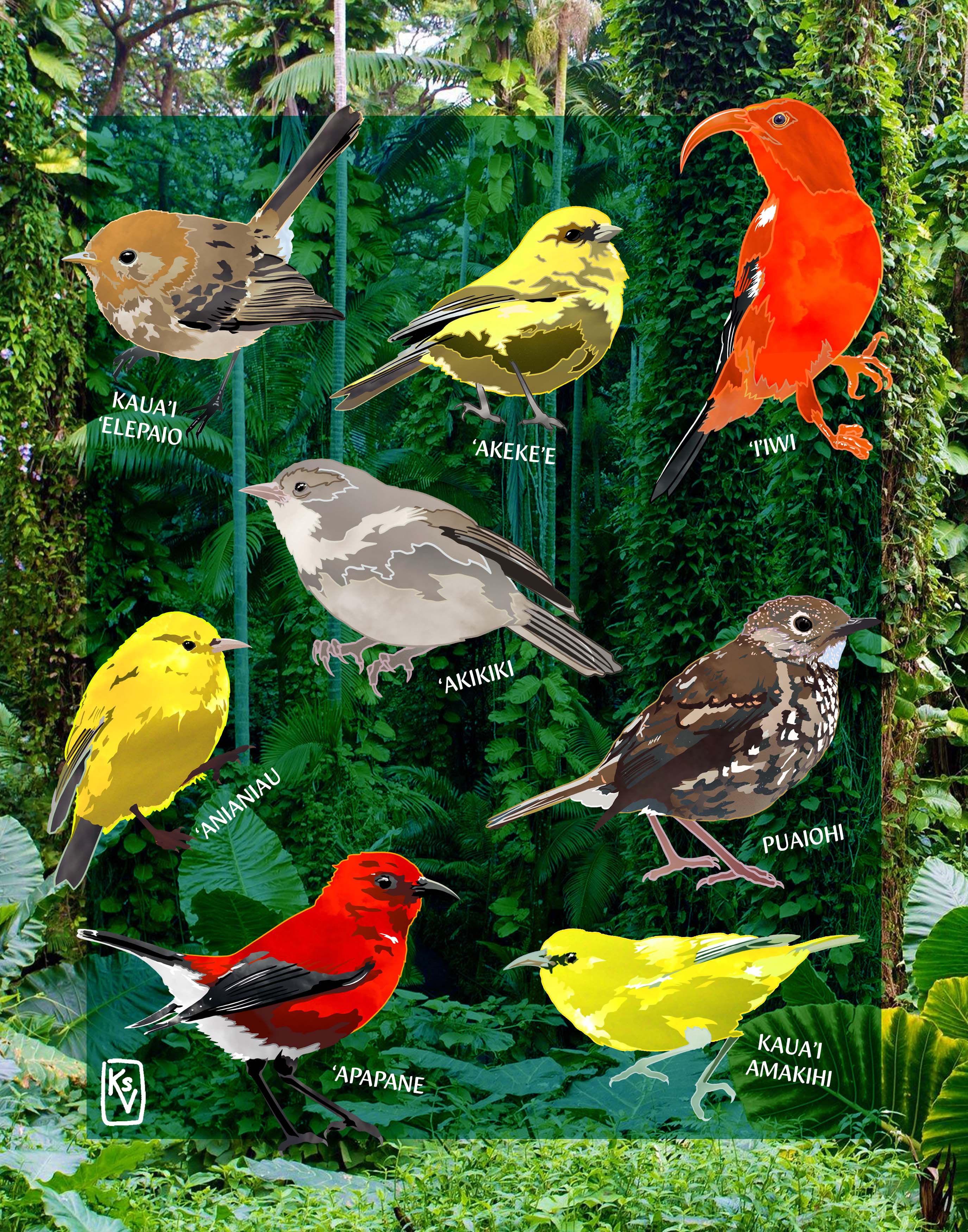
LAND OF BIRDS is an ongoing reciprocity project benefitting community-led efforts to support thriving native habitats in Hawaii.
SUMMER 2023: in partnership with the Kauai Forest Bird Recovery Project, twelve new bird stickers have joined the family, celebating Kauai’s rare, imperiled, and extinct native forest birds, who have faced and are facing serious threats resulting from mosquito-born illness caused by anthropogenic climate change.
︎︎︎ buy the stickers in my shop and learn more about the birds here...
SUMMER 2023: in partnership with the Kauai Forest Bird Recovery Project, twelve new bird stickers have joined the family, celebating Kauai’s rare, imperiled, and extinct native forest birds, who have faced and are facing serious threats resulting from mosquito-born illness caused by anthropogenic climate change.
︎︎︎ buy the stickers in my shop and learn more about the birds here...

when you buy a set of Hawaiian native birds stickers ($33), a MĀLAMA Forest Birds sticker sheet, below ($12), a LAND OF BIRDS poster or a Forest Birds of Kauai poster, below ($33) you'll receive gorgeous art featuring Hawaii’s sky birds, and the proceeds from your purchase directly benefit a Hawaiian organization doing vital work to support, protect, and restore the land and all of the gifts it provides.
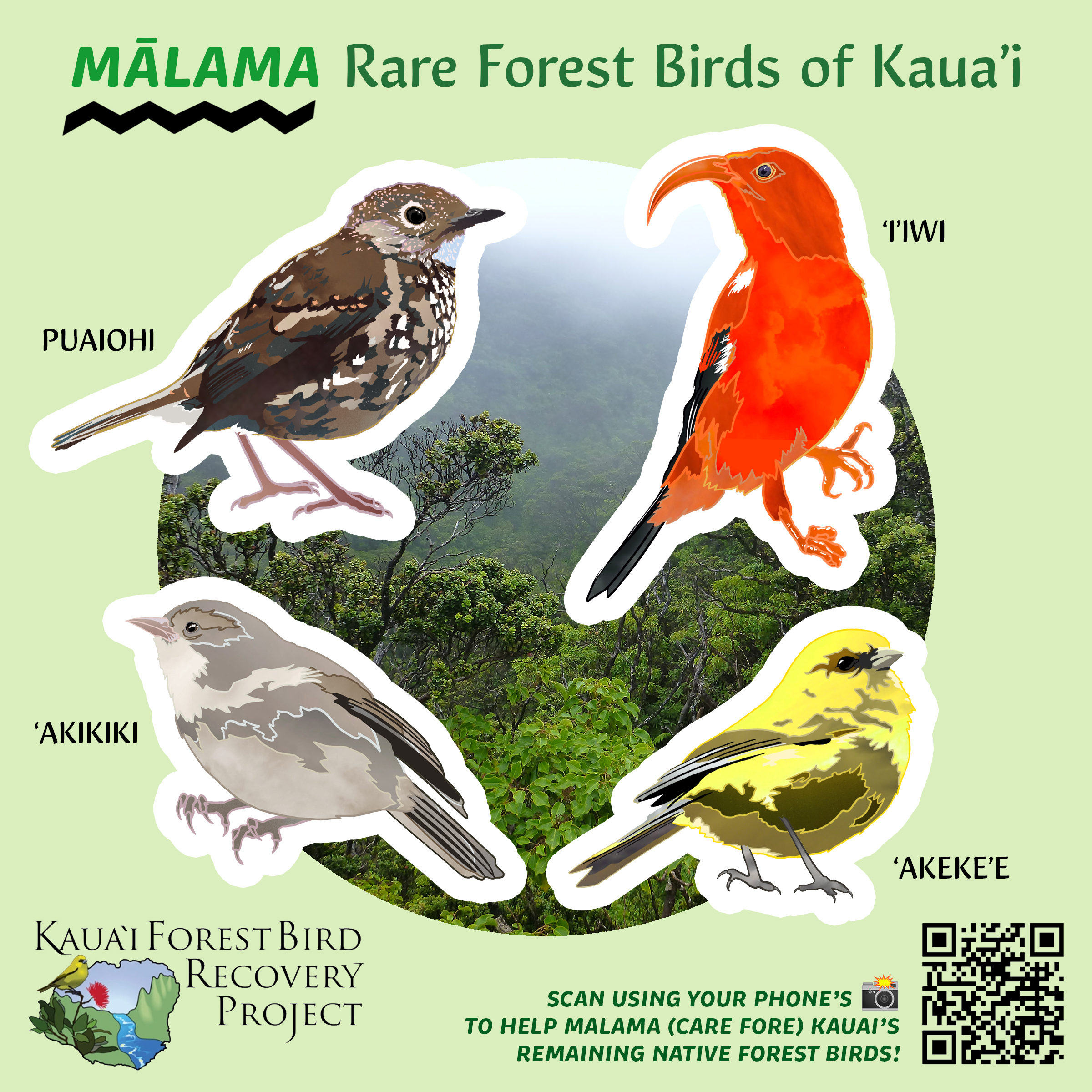


With your purchase, choose one of these organizations to support (let me know which one in the notes):
- Kumano I Ke Ala — a working farm on Kauai’s south shore teaching Indigenous methods of kalo (taro) farming, Hawaiian language, history and cultural practices to local schools and at-risk youth. click here to watch an amazing video about this project!
- I Ola Wailuanui — a community-led effort to purchase and restore the sacred land at Wailuanuiaho’ano (aka the former Coco Palms Resort, which was devastated by Hurricane Iniki in 1992) as a center for Hawaiian culture, education, conservation & food production
- Native Hawaiian Legal Corporation — helps Native Hawaiians navigate the legal system, which is often hostile to Hawaiian values but also holds promise for restoring justice
- Kauai Forest Bird Recovery Project — promotes the conservation of Kauai’s threatened + endangered native forest birds (including the red ‘apapane) with the goal of helping their populations recover in the wild


|

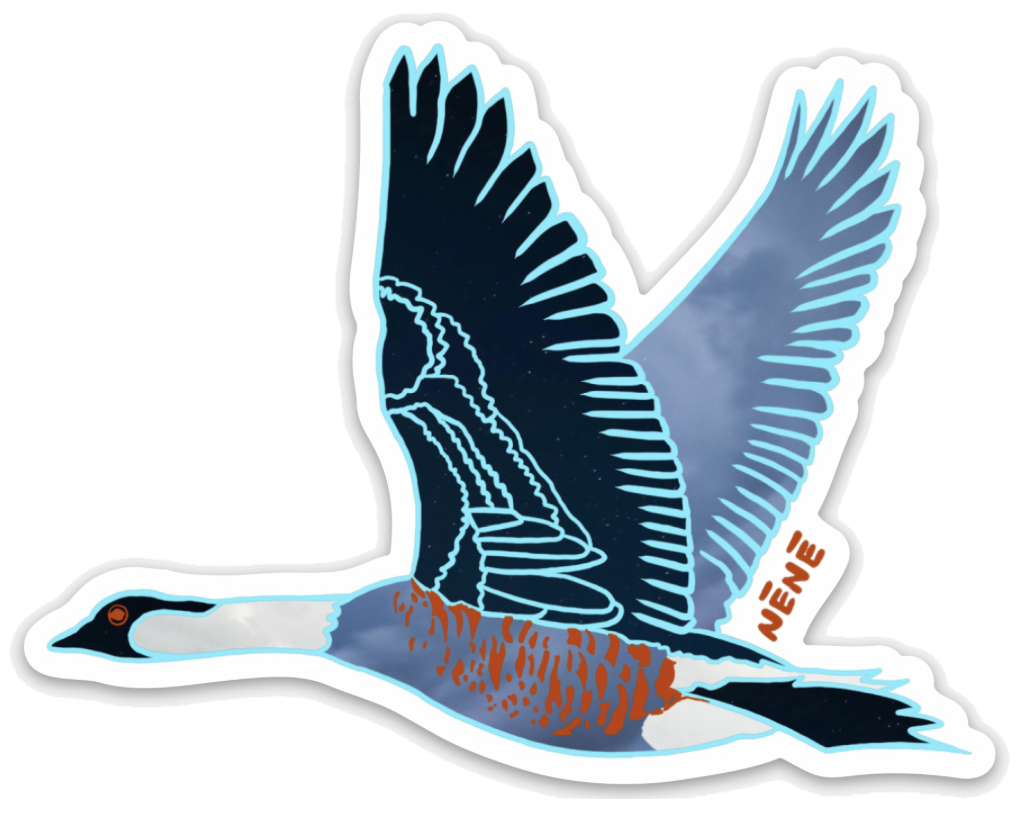 the incredible nēnē, whose webbed feet evolved for walking on lava, is the rarest goose in the world. In the 1950’s, the species was on the brink of extinction, but thanks to dedicated biologists at Hawaii Volcanoes National Park, the nēnē population is rebounding
the incredible nēnē, whose webbed feet evolved for walking on lava, is the rarest goose in the world. In the 1950’s, the species was on the brink of extinction, but thanks to dedicated biologists at Hawaii Volcanoes National Park, the nēnē population is rebounding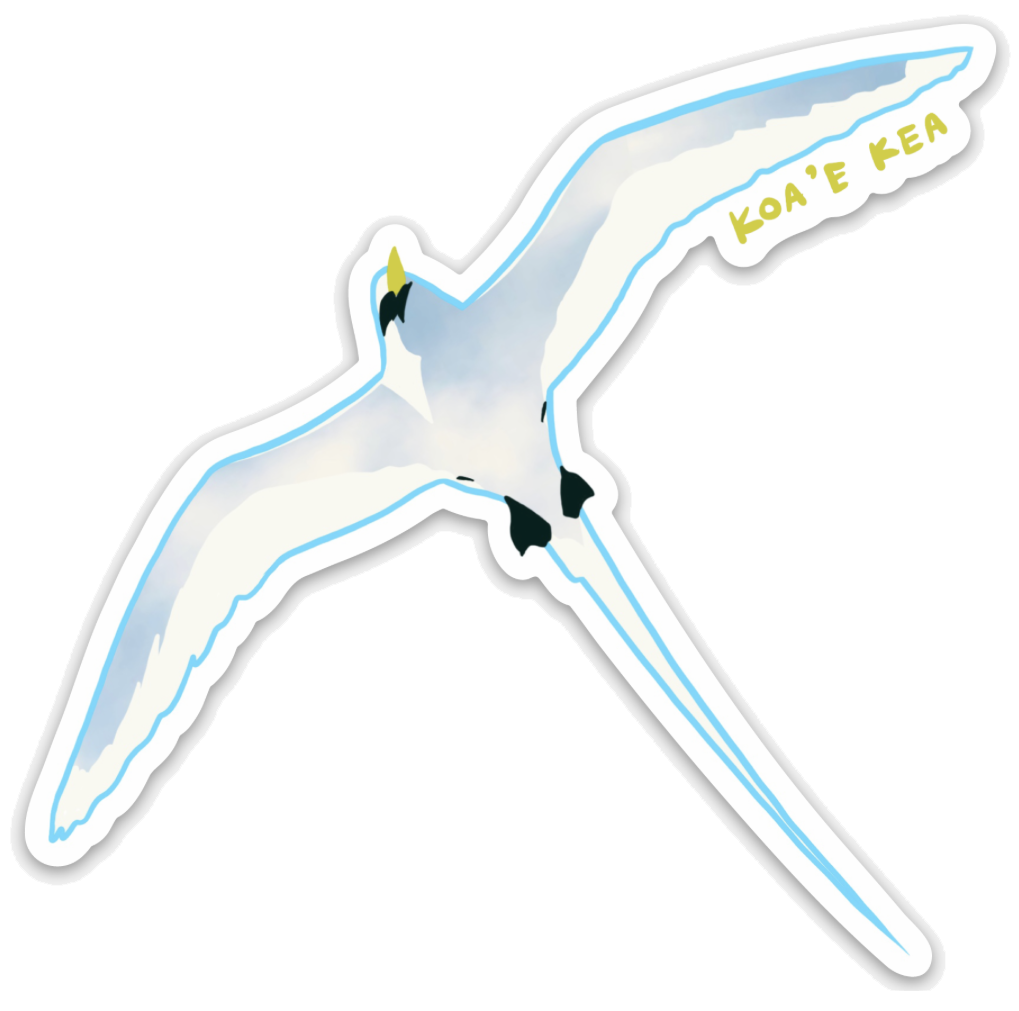
if you’ve been to hawaii, chances are you’ve seen the majestic koaʻe kea, or white-tailed tropicbird, sailing air currents along cliff edges or circling above volcanic caldera where they nest. their tail feathers can be nearly 16 inches long - almost as long as their bodies!
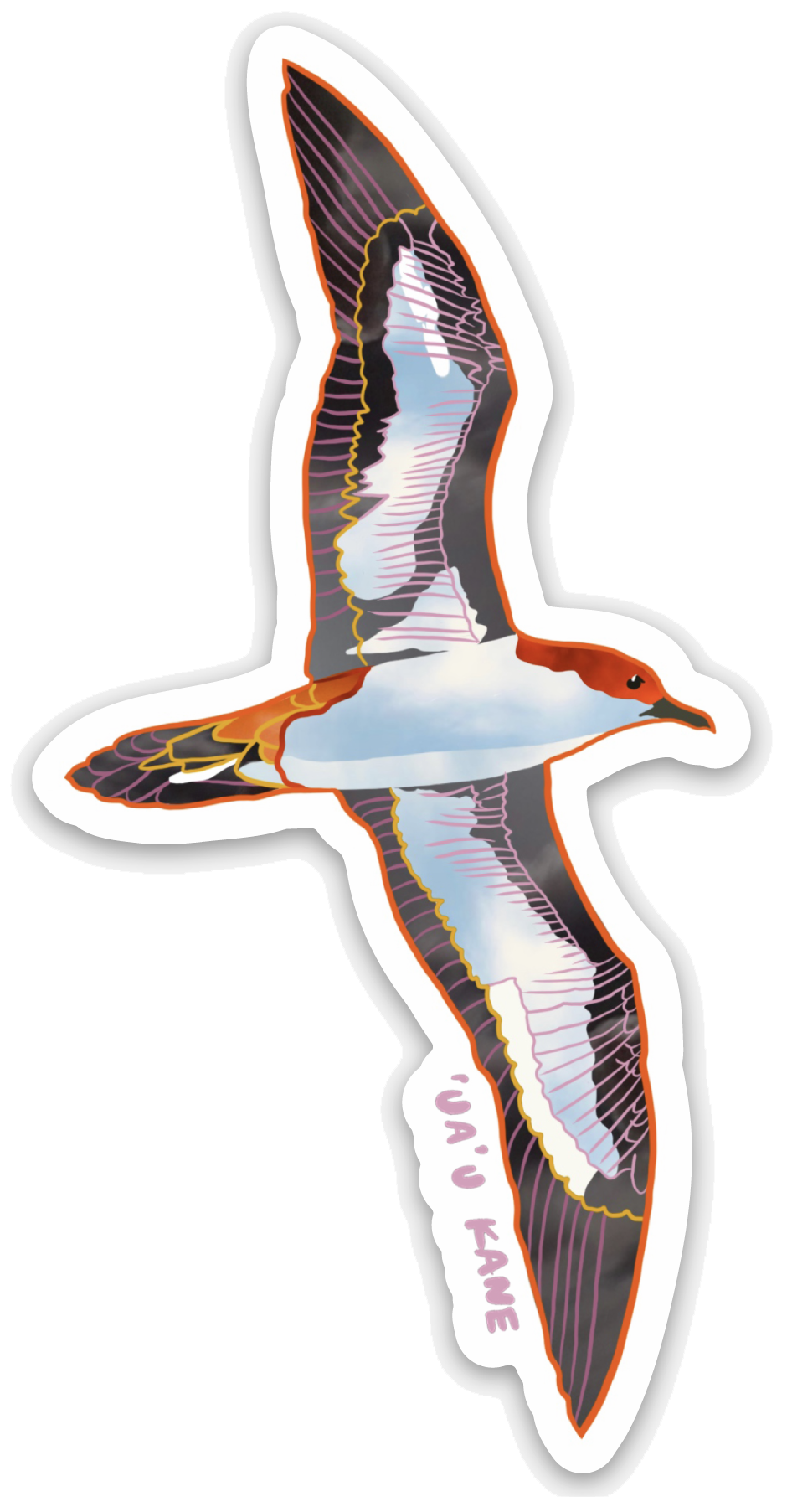
‘ua’u kane, or wedge-tailed shearwater, are hawaiian seabirds known to chase fishing boats and plunge head-first into the waves to retrieve fish. gotta love the fact that their scientific name is “Puffinus pacificus” 🐠
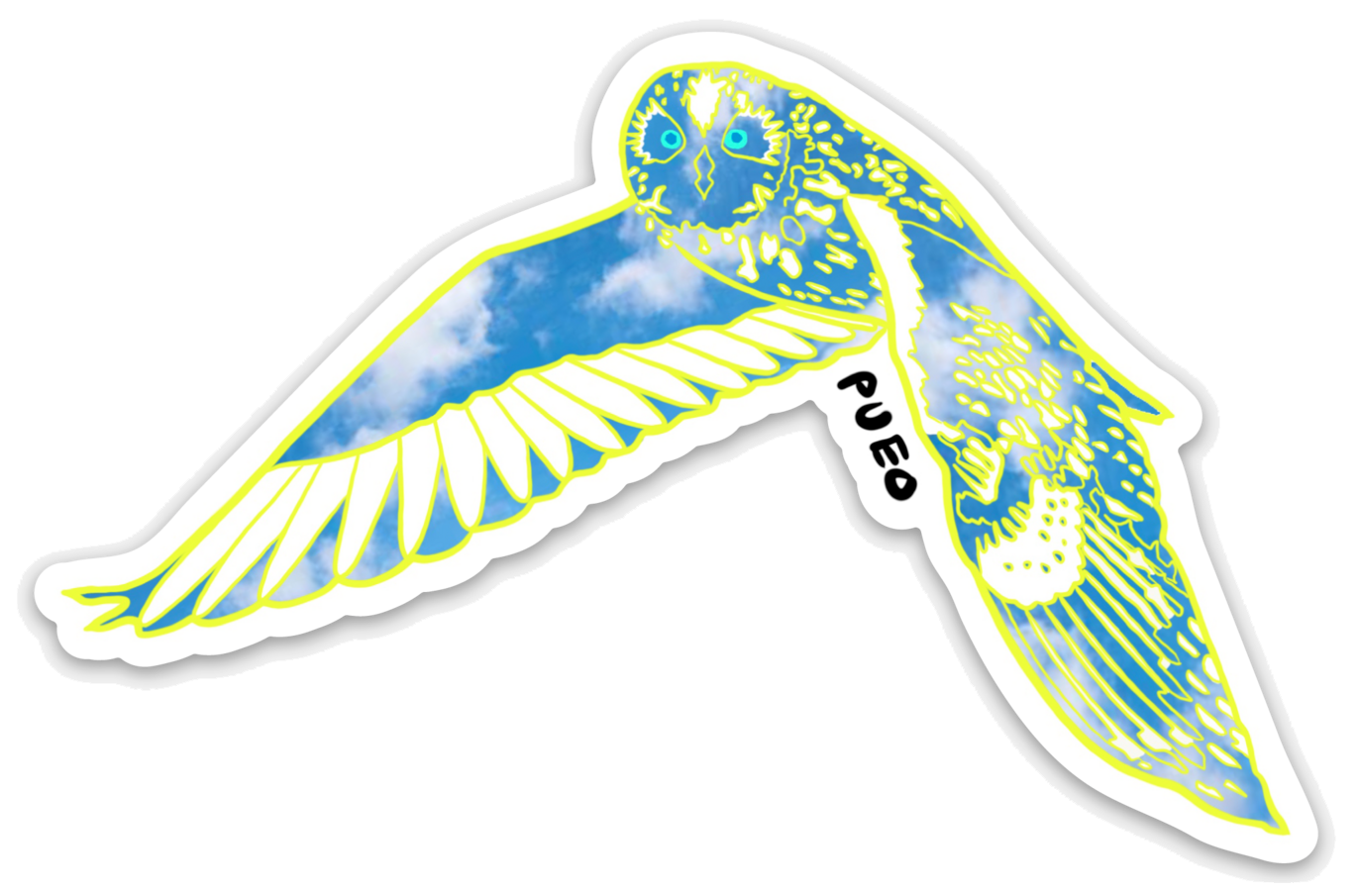
pueo, or hawaiian short-eared owls, hunt in the daytime. they’re an endangered species on Oahu and mainly seen in upcountry Maui or along Saddle Road on Hawaii Island
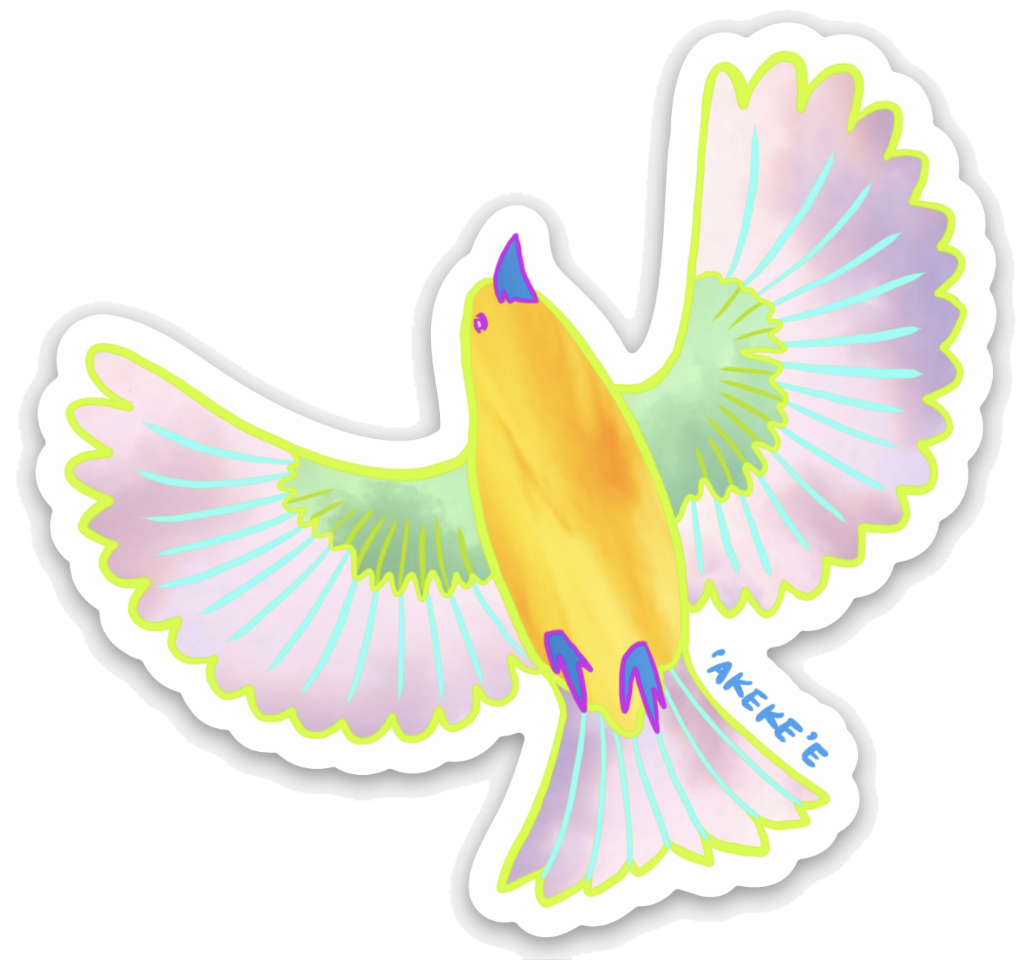 the ‘akeke‘e is a beautiful, critically endangered songbird whe lives in the remote forests of the alakai’i swamp on kauai where temperatures are too cold (for now) for avian malaria-carrying mosquitoes to reach them. they sing in the fog, and of all the threatened Hawaiian birds are most vulnerable to population decline.
the ‘akeke‘e is a beautiful, critically endangered songbird whe lives in the remote forests of the alakai’i swamp on kauai where temperatures are too cold (for now) for avian malaria-carrying mosquitoes to reach them. they sing in the fog, and of all the threatened Hawaiian birds are most vulnerable to population decline. graceful ae‘o, or Hawaiian black-necked stilt, forage for crustaceans and small fish at the edge of tidal ponds, taro patches, and reservoirs. their eggs look like stones - a necessary camouflage as they are endangered due to wetland development and predation by feral cats and mongoose.
graceful ae‘o, or Hawaiian black-necked stilt, forage for crustaceans and small fish at the edge of tidal ponds, taro patches, and reservoirs. their eggs look like stones - a necessary camouflage as they are endangered due to wetland development and predation by feral cats and mongoose. red-feathered
 ‘io, the hawaiian hawk, is endemic to hawaii and found nowhere else in the world. while ‘io hunt in a wide variety of human-altered habitats, they nest and breed only in forests of native hawaiian trees
‘io, the hawaiian hawk, is endemic to hawaii and found nowhere else in the world. while ‘io hunt in a wide variety of human-altered habitats, they nest and breed only in forests of native hawaiian trees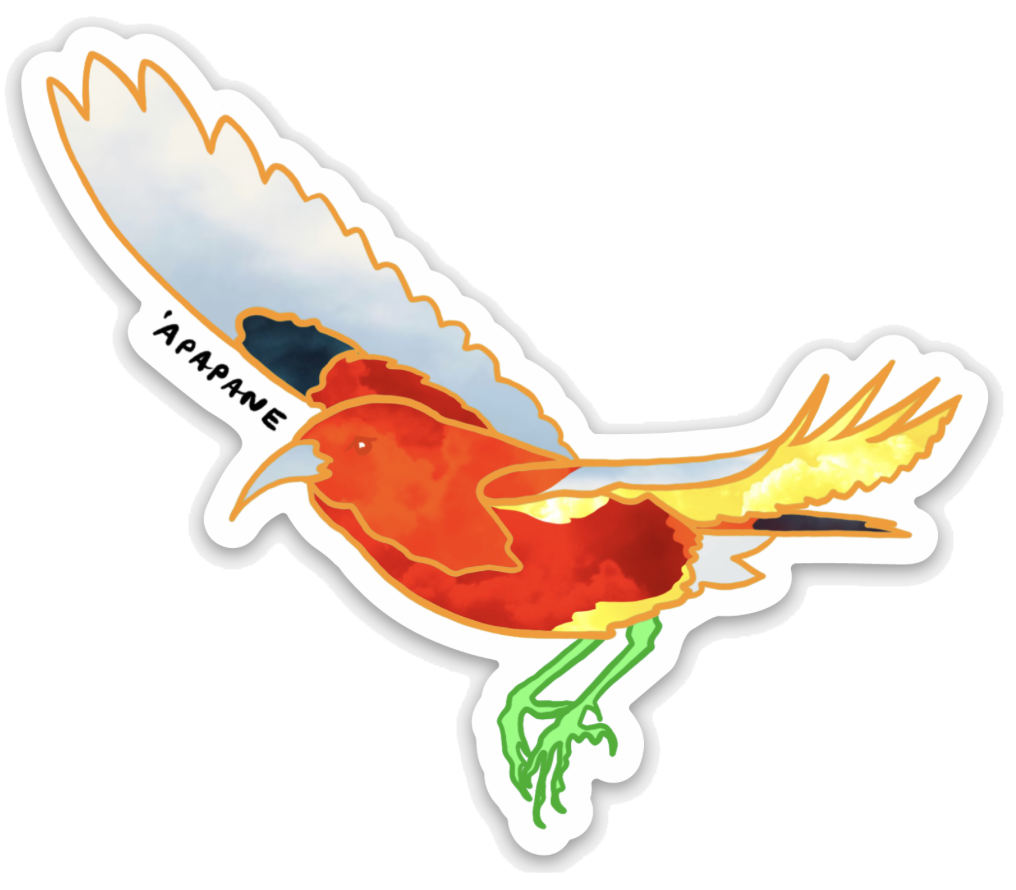
‘apapane live on all the hawaiian islands, and can be seen sipping nectar from red ʻohiʻa flowers in the high-elevation forests of Hawaiʻi Volcanoes National Park. they are vital pollinators, and wander widely (sometimes from island to island) as they follow the blooming patterns of native trees
